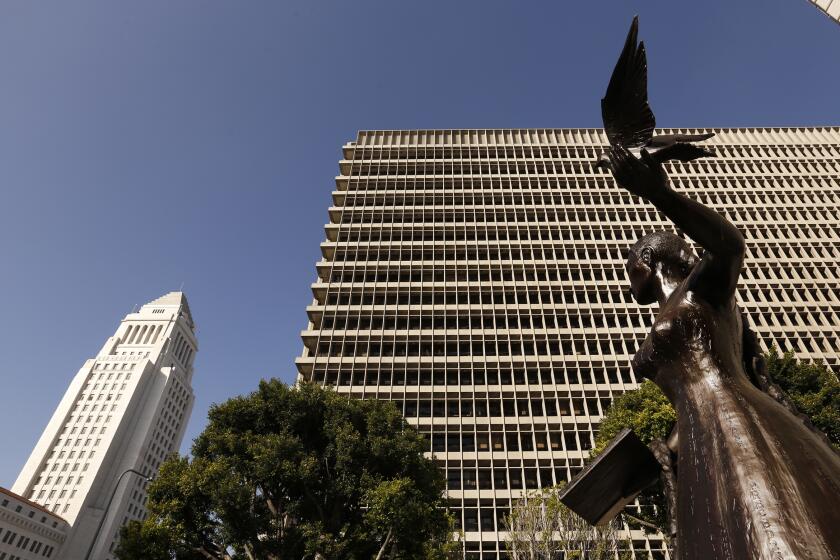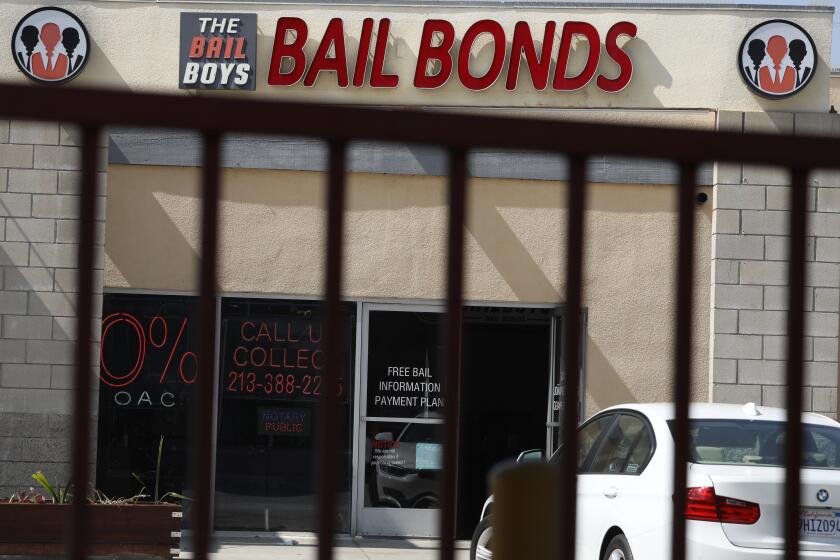L.A. Times’ judicial endorsements explained

- Share via
The majority of decisions most Los Angeles County voters are asked to make on their March 5 ballots deal with Superior Court judges. But they have less readily available information about the judicial candidates than they do for any other races.
That’s no accident. A variety of laws, rules, practices and customs limit what judicial candidates can tell voters about who they are and what they would do if elected. A voter might reasonably want to know which candidates are Republicans or Democrats, for example, or which ones will be toughest on shoplifters, or in which courthouse or department they might serve if elected.
While the presidential contest will garner the most attention in 2024, there are many important races and measures on state and local ballots.
Most of these questions are difficult, if not impossible, to answer. That makes it more mysterious and frustrating to vote for judges than for any other official.
To help voters make smart choices with little information, The Times editorial board answers some commonly asked questions about judicial elections and how we decide which candidates to endorse.
For the first time in three decades, The Times recommends the ouster of an incumbent judge. Another challenged judge should be reelected.
Why do we vote for Superior Court judges?
The vast majority of Los Angeles Superior Court judges are appointed by the governor and are never challenged. Voters are asked to step in every two years for various reasons, such as when judgeships open up or incumbents declare their intention to step down in the few months before an election, or when a challenger tries to unseat a sitting judge. In any given election, voters decide how to fill fewer than 10% of judicial offices. This year, it’s slightly under 6%.
Why are there so many judicial races on the March 5 ballot?
Be grateful there aren’t more — 169 judicial terms end this year. But most seats have incumbent judges who are running for reelection without opposition, so they won’t appear on the ballot and will win new six-year terms automatically. There are two races in which candidates are challenging incumbent judges, and eight open seats.
The county registrar numbers the judicial posts before it’s clear which ones will appear on the ballot. That’s why voters see seemingly random office numbers like 12, 39 and 43 on their ballots.
A candidate who receives more than 50% of the vote in March wins the office outright. If no candidate emerges with a majority of votes, the top two vote-getters face off in November.
Twenty-six people are running for eight open judicial seats on the Los Angeles County Superior Court. Here are The Times’ recommendations.
Why is there only one candidate running for office No. 93, while as many as four candidates are running for other judicial offices?
It’s part campaign strategy, part luck of the draw.
Candidates can declare their intention to run for multiple seats early in the process, while they check out who else is running and decide whom they want to run against. Colleagues in the district attorney’s office, for example, may try to avoid running against one another. Or they may want to avoid challenging candidates who they believe are particularly strong.
History suggests that voters like to elect criminal prosecutors to the bench, and current campaign lore holds that candidates with Latino surnames do well in Los Angeles County. That may be why candidates decided to give Victor Avila, a prosecutor with a Latino surname, a wide berth in this race. Or it could just be a fluke.
Avila actually has an opponent. You won’t see deputy public defender Natasha Khamashta’s name on the ballot, but she qualified to run as a write-in candidate. Under the rules for write-in campaigns, her name written on the ballot counts as a vote even if it is misspelled, as long as the voter’s intention is clear.
The Times’ editorial page will begin publishing its endorsements for the March 5 ballot this week. There’s a lot more than just the presidential primary.
Descriptions for judge candidates who are prosecutors just say “deputy district attorney, Los Angeles County.” Why aren’t their assignments, like “sex crime prosecutor,” listed?
They used to be, but ballot designations, as they are known, were restricted by legislation in 2017. It was believed that judicial candidates played too fast and loose with their designations, and that voters were duped rather than informed by the three-word (plus jurisdiction name) descriptions.
You can often find out more about their work from their websites or other campaign materials.
These rules don’t apply to candidates for other offices. Those running for district attorney can still call themselves a “sex crimes prosecutor” on the ballot. It’s a good example of the tension between the competing goals of giving voters the information they need to elect judges and policing the quality of that information to uphold the dignity of judicial office.
An Orange County Superior Court judge struck a major blow against a lawsuit challenging L.A. County’s new bail policy, which police and some city leaders have contended could lead to an increase in crime.
Why won’t judicial candidates say how tough they will be on shoplifters?
Candidates are forbidden by the Canons of Judicial Ethics — a code of conduct adopted by the state Supreme Court, pursuant to the state Constitution and subject to enforcement — from saying how they would rule on cases they have not heard. Judges are required to approach cases with open minds and to hear the facts and arguments on each side before rendering decisions.
Some judicial candidates this year, and in previous elections, have said they would impose alternative sentences that do not result in verdicts or felony records. Experts consulted by the Times editorial board differ on whether such statements amount to improper promises about how they would rule if elected.
But judicial candidates don’t even know whether they might be assigned to hear criminal cases as opposed to, say, adoptions or conservatorships. That decision is largely out of their hands.
Data from three weeks of the new pre-arraignment release protocol pokes some serious holes in the false and fearful narrative peddled by police and far too many politicians.
How does the editorial board vet judicial candidates?
We observe them in the courtroom when possible and ask a lot of questions. We interview the candidates as well as people familiar with their work, such as opposing lawyers, colleagues, judges and courtroom staff.
We look for candidates who know the law and court procedure well, treat others with respect, command respect for themselves, control their tempers under trying circumstances and appear committed to even-handed justice.
More to Read
A cure for the common opinion
Get thought-provoking perspectives with our weekly newsletter.
You may occasionally receive promotional content from the Los Angeles Times.














